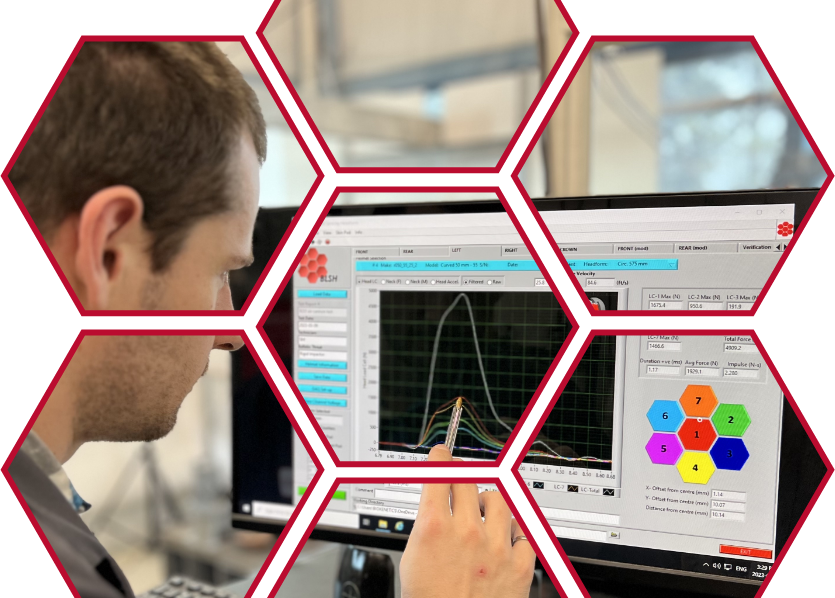Backface signature standards include:
BABT addresses the bodily loading from defeated ballistic strike and associates the severity of impact with injury potential. This approach differs from clay in that the armour is supported by an anthropomorphic test device that has a representative shape and dynamic compliance, or biofidelity, allowing the armour to be supported and interact with the device in a more realistic manner. The device is also instrumented to measure the dynamic response of the interaction which can be equated to injury severity and risk. For helmets, head BABT, sometimes called Behind Helmet Blunt Trauma (BHBT), can be assessed with Biokinetics Ballistic Load Sensing Headform (BLSH) (*link) that measures the forces and distribution of the shell/liner system on the skull for assessing fracture potential. Additionally, mandible loads from facial or maxilla protection systems can be assessed with the Mandible Load Sensing Headform (MLSH) (*link). For the torso, Biokinetics’ Blunt Trauma Torso Rig (BTTR) (*link) assesses BABT by measuring the instantaneous deformation and speed of deformation to evaluate both low and high-rate modes of injury causation. The test devices have been referenced by NATO STANAG 2920 as a means of evaluating BABT for ballistic threats.
DoP testing is a way of ranking the protective capacity of various armour solutions by evaluating the residual energy of the projectile after penetration occurs by measuring projectile’s depth of penetration into solid rods of standard Aluminium or Polycarbonate (the backing material). Depth-of-penetration testing is achieved by attaching an armour tile to a ductile backing material and firing at the target, recording the resulting depth-of-penetration (DOP) and comparing that value to a value of penetration depth achieved without the armour tile in place. The advantage of this method is that it is relatively cheap to establish performance criteria for the armour tile in question, however, its disadvantage is that the semi-infinite backing is not representative of an armour system and therefore its value is in assessing comparative tile performance. These performance criteria are derived from the measured reduction in penetration and the mass of material required to reduce the penetration depth.
Explore Our Innovative Testing Services Today and Take the First Step Towards a Safer Tomorrow

Copyright © 2025 Biokinetics | Acknowledgements | Privacy Policy